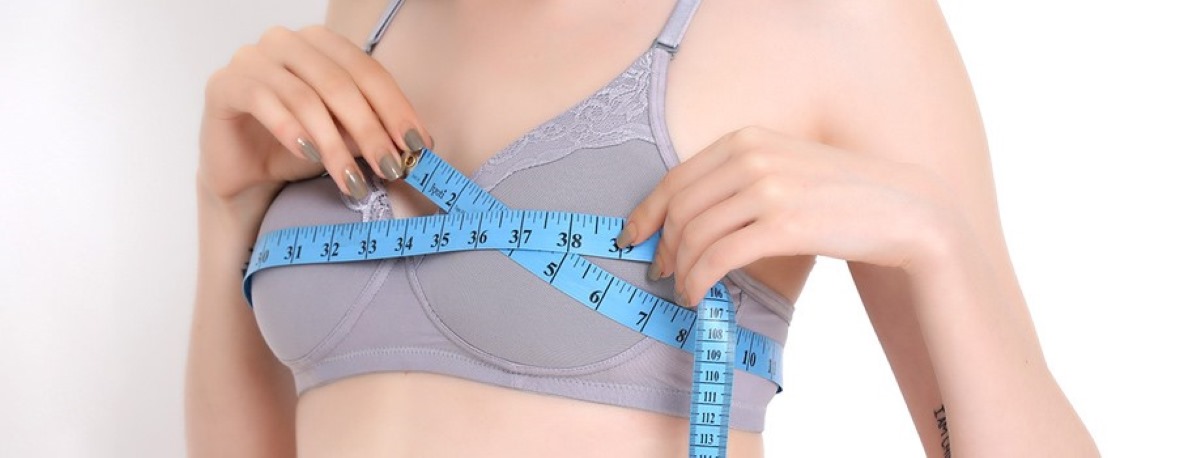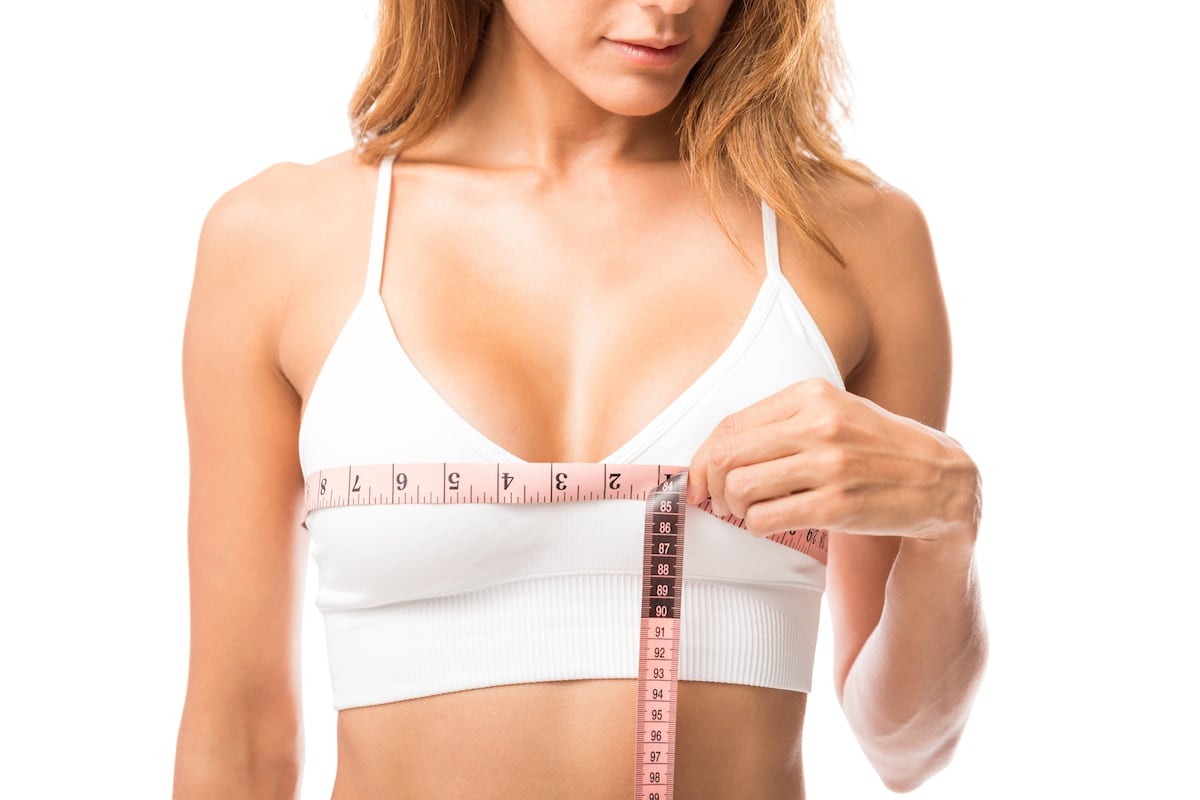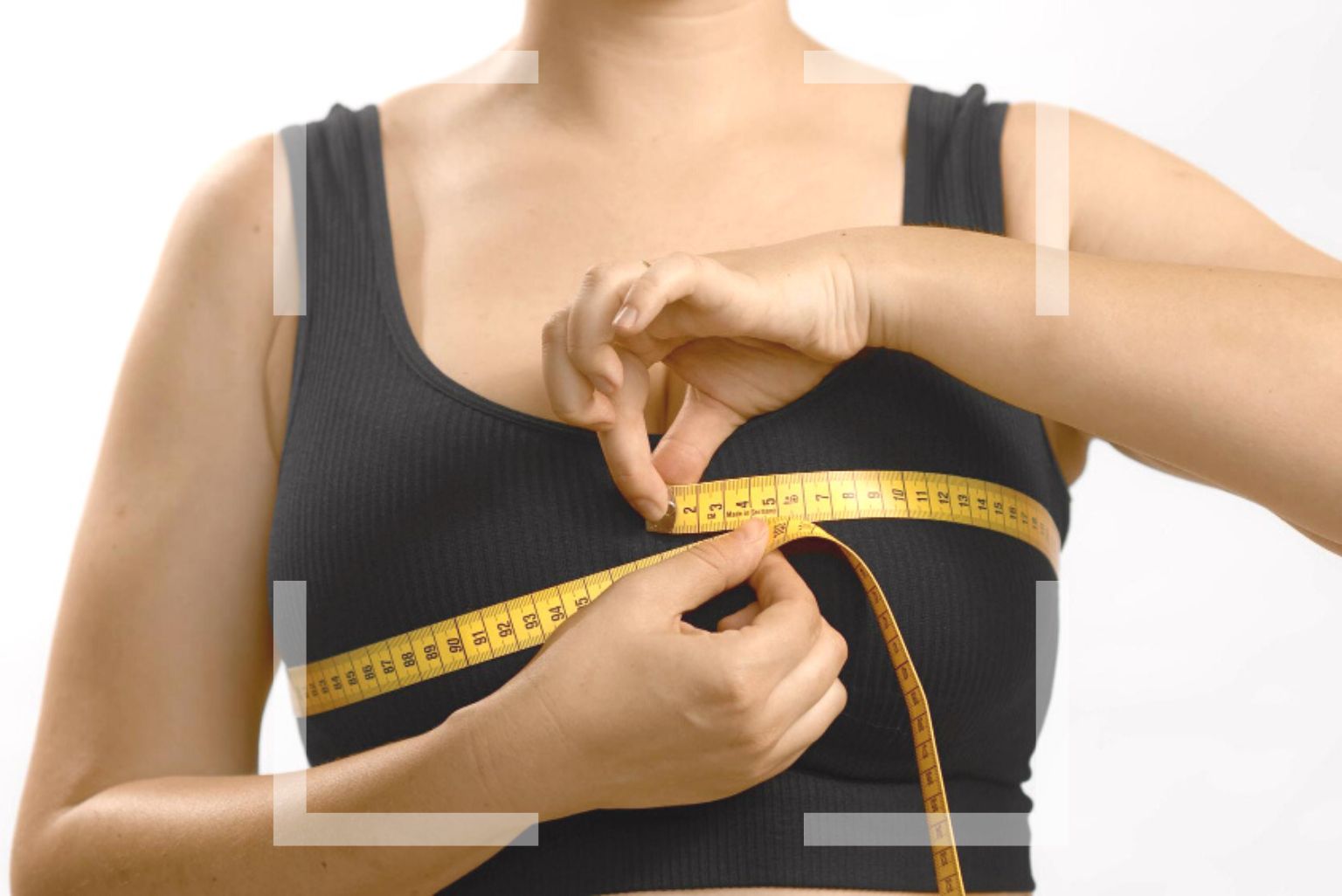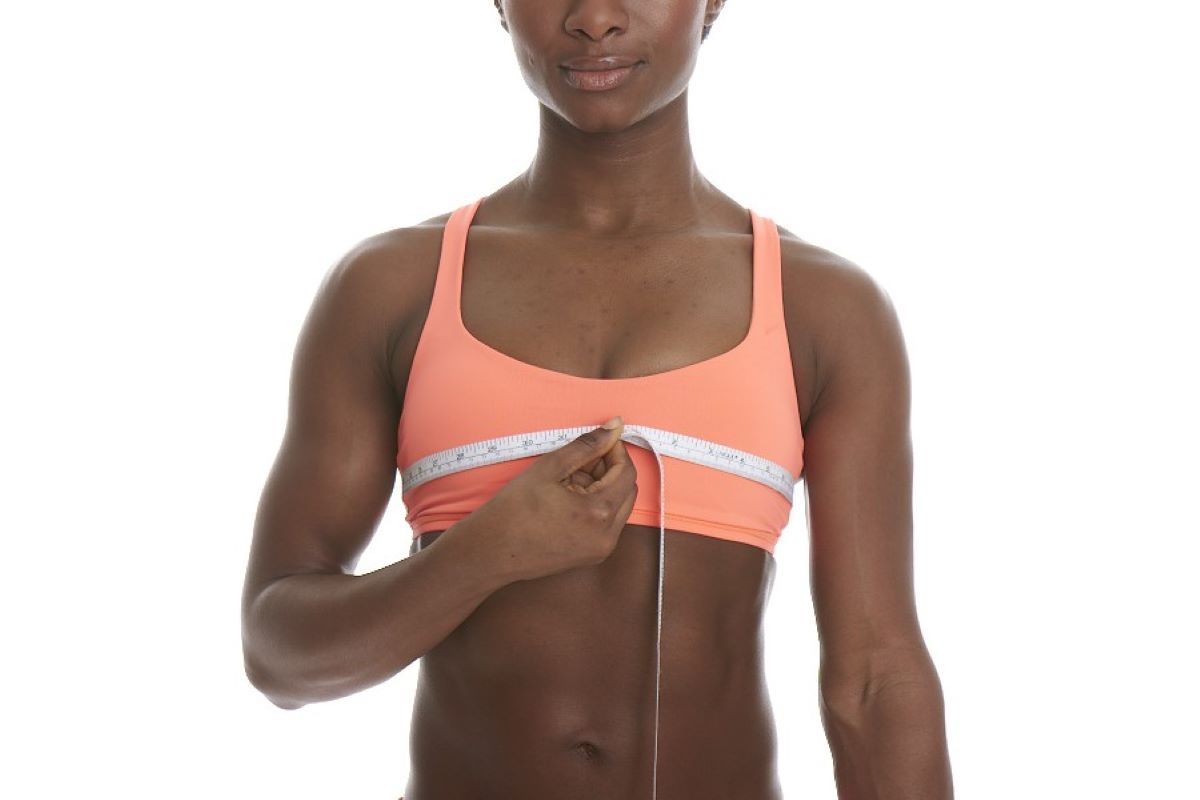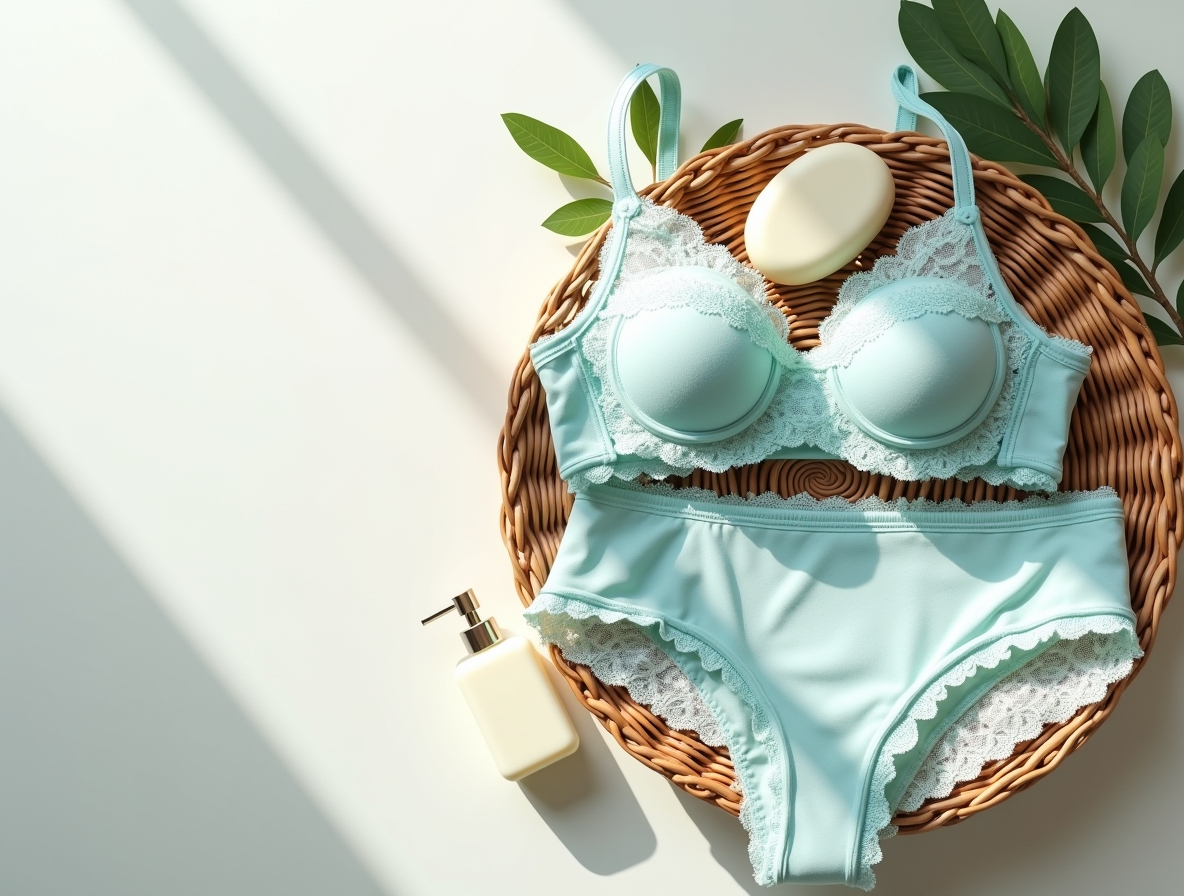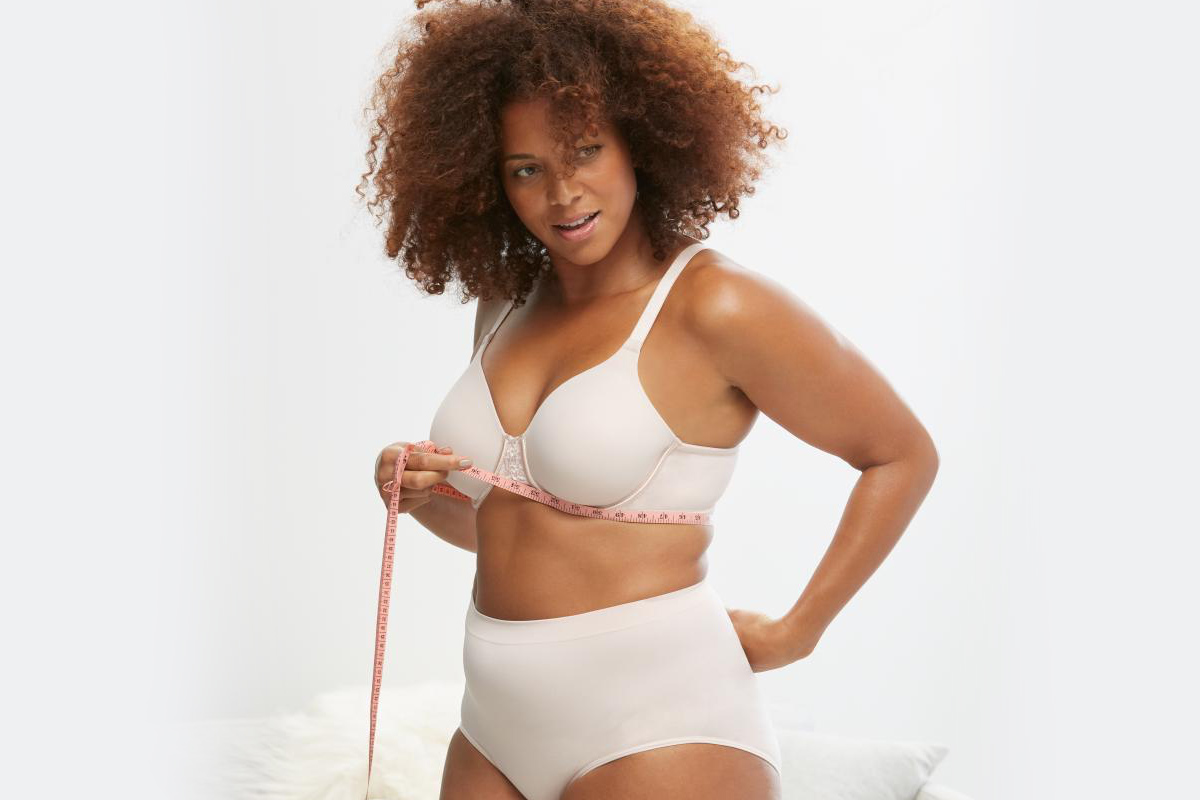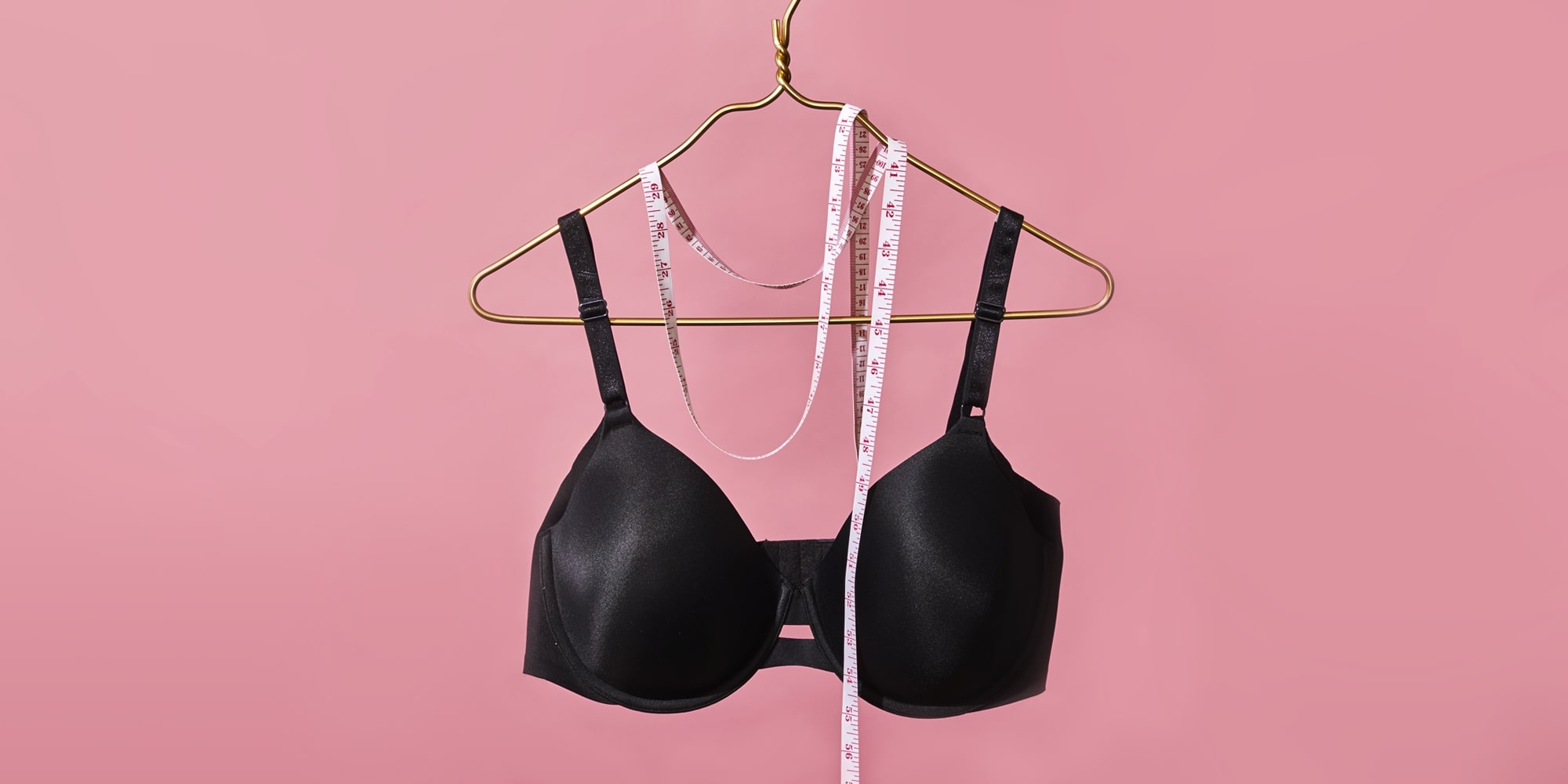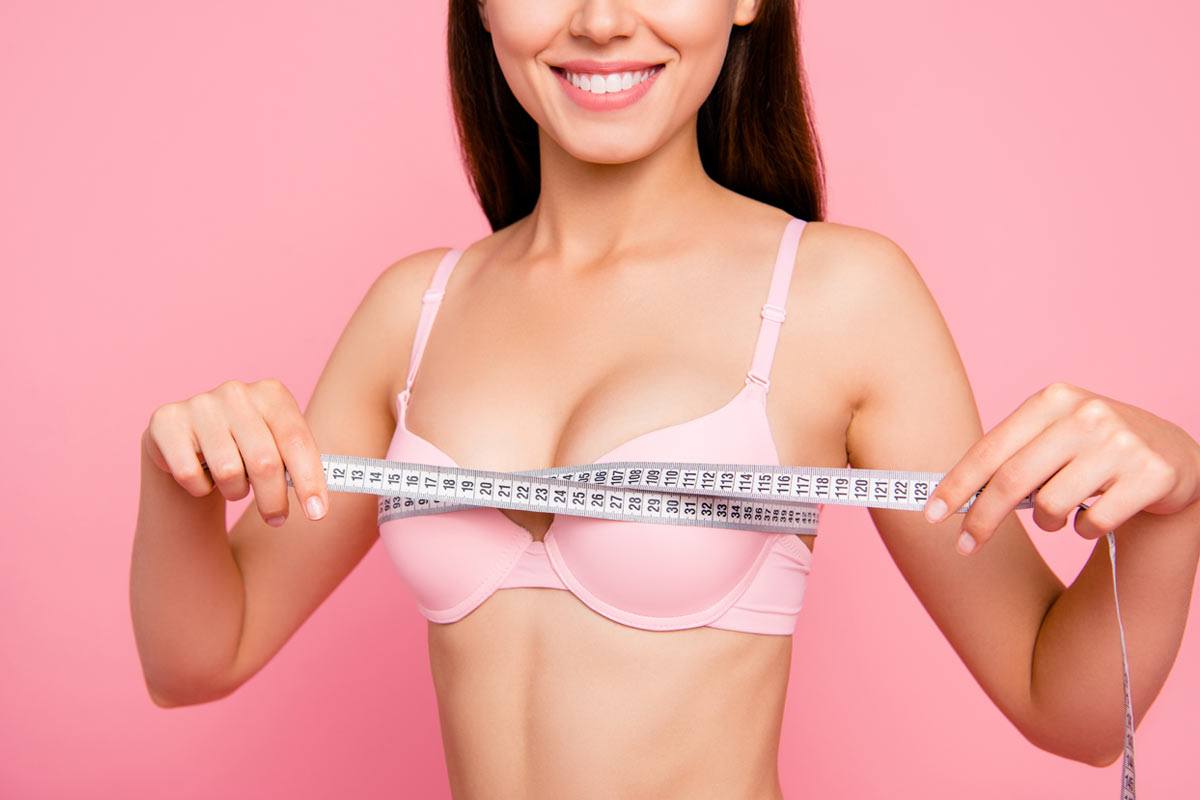Home>How-to Guides>For Women>How To Pick The Right Size Bra
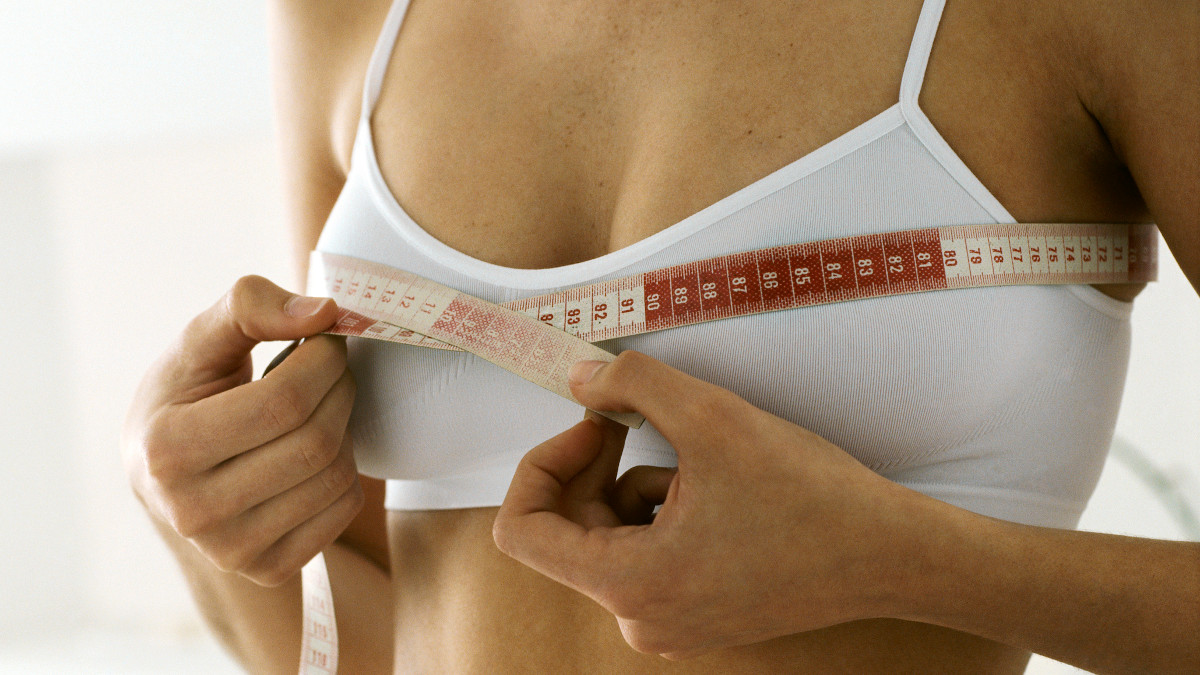

For Women
How To Pick The Right Size Bra
Modified: September 23, 2023
Learn how to choose the perfect bra size for women and ensure optimal comfort and support. Find the right fit with our comprehensive guide.
(Many of the links in this article redirect to a specific reviewed product. Your purchase of these products through affiliate links helps to generate commission for Under-tec.com, at no extra cost. Learn more)
Table of Contents
- Introduction
- Understanding Bra Sizes
- Measuring Your Band Size
- Determining Your Cup Size
- Choosing the Right Style for Your Body Type
- Trying on Different Sizes and Styles
- Getting Professional Bra Fittings
- Common Bra Fitting Issues and Solutions
- Understanding the Importance of Comfort and Support
- Frequently Asked Questions (FAQs)
- Conclusion
Introduction
Welcome to the ultimate guide on how to pick the right size bra! Finding a bra that fits well and provides the right level of support can be a game-changer when it comes to comfort and confidence. However, with so many different sizes and styles available, it can be overwhelming to navigate the world of bras.
Whether you’re shopping for your first bra or looking to upgrade your current collection, understanding how to measure your bra size and choose the right style for your body type is essential. In this article, we will walk you through the process step-by-step, ensuring that you have all the knowledge and tools necessary to find the perfect fit.
One of the key components of finding the right bra size is understanding how bra sizing works. Contrary to popular belief, the size goes far beyond just a letter and a number. It involves finding the perfect balance between the band size and the cup size. A well-fitting bra should provide ample support and lift, ensuring that your breasts are properly positioned and comfortable throughout the day.
But how do you determine your band size and cup size? Don’t worry! We will guide you through the measuring process, taking into account different factors that can affect your bra size, such as weight fluctuations, pregnancy, and breastfeeding.
In addition to finding the correct size, we’ll also delve into the different styles of bras available and how to choose the right one for your body type. Whether you have a full bust, a smaller bust, or are looking for a specific type of coverage or lift, understanding which styles work best for you will make a world of difference in your comfort and confidence.
Trying on different sizes and styles is a crucial part of the process. We’ll provide tips on how to properly try on a bra and factors to consider when determining which size or style is the best fit for you. Additionally, we’ll discuss the benefits of getting professional bra fittings and address common fitting issues and solutions.
Lastly, we’ll emphasize the importance of comfort and support when choosing a bra. A well-fitting bra should not only make you feel confident but also ensure that you are comfortable throughout the day. We’ll provide insights into different features that contribute to comfort and support, allowing you to make informed decisions when shopping for bras.
So, if you’re ready to embark on a journey to find the perfect bra that will revolutionize your comfort and confidence, let’s dive into the world of bra sizing, styles, fittings, and more!
Understanding Bra Sizes
When it comes to finding the right bra size, it’s essential to understand how bra sizes are structured. A bra size consists of two components: the band size and the cup size.
The band size refers to the measurement around your ribcage, directly beneath the breasts. This measurement determines the band size, which is represented by a number (e.g., 32, 34, 36, etc.). A properly fitting band should feel snug but not too tight, providing the majority of the support.
The cup size, on the other hand, is determined by the difference between your band size and the measurement around the fullest part of your bust. Cup sizes are represented by letters (e.g., A, B, C, D, etc.), with each letter corresponding to a specific amount of difference in measurement.
It’s important to note that cup size is relative to band size. For example, a 34C bra has a different cup volume than a 36C. As band size increases, cup volume also increases to maintain proportionality. This concept is known as sister sizing, where you can go up a band size and down a cup size or down a band size and up a cup size to find a similar fit.
Understanding sister sizing allows for more flexibility when shopping for bras, especially if you encounter limited options in your exact size.
Additionally, it’s important to remember that bra sizes can vary between brands and even different styles within the same brand. This is why it’s crucial to try on different sizes and styles to find the best fit for you. Don’t be discouraged if you find that you need to try a few different sizes before finding the perfect one.
Now that you have a basic understanding of how bra sizes work, it’s time to move on to the next step: measuring your band size. Keep in mind that measuring yourself accurately and regularly is key, as factors like weight fluctuations and hormonal changes can affect your bra size.
In the following sections, we will guide you through the measuring process, help you determine your cup size, and provide valuable tips for choosing the right bra style for your body type.
Measuring Your Band Size
Measuring your band size is the first step in finding the right bra size. To accurately measure your band size, you’ll need a flexible measuring tape and a mirror to ensure accuracy.
- Start by standing in front of a mirror and wearing an unpadded bra or no bra at all. This will ensure that your measurements reflect your natural shape.
- Wrap the measuring tape around your ribcage, just beneath your breasts. Make sure the tape is parallel to the ground and snug but not too tight. Take note of the measurement in inches.
- If the measurement is an even number, that is your band size. If it’s an odd number, round up to the nearest even number to determine your band size.
For example, if your measurement is 29 inches, your band size would be 30. If your measurement is 31 inches, your band size would be 32.
Remember, the band should feel snug but not constricting. It should stay in place without riding up or digging into your skin.
It’s important to note that different brands and styles may fit differently, so don’t be discouraged if you find that you need to try different band sizes to find the perfect fit. Also, keep in mind that your band size may vary depending on factors like weight fluctuations and pregnancy, so it’s a good idea to measure yourself regularly to ensure the best fit.
Now that you know how to measure your band size, it’s time to move on to determining your cup size, which will complete the process of finding your ideal bra size.
Determining Your Cup Size
Now that you have your band size figured out, it’s time to determine your cup size. To do this, measure the fullest part of your bust, making sure the measuring tape is parallel to the ground and not too tight.
- Wrap the measuring tape around your chest at the fullest part of your breasts.
- Take note of the measurement in inches.
Next, subtract your band size measurement from your bust measurement. The difference will determine your cup size. Use the following chart to find your cup size:
- If the difference is less than 1 inch, your cup size is AA.
- If the difference is 1 inch, your cup size is A.
- If the difference is 2 inches, your cup size is B.
- If the difference is 3 inches, your cup size is C.
- If the difference is 4 inches, your cup size is D.
- If the difference is 5 inches, your cup size is DD (or E).
- If the difference is 6 inches, your cup size is DDD (or F).
- If the difference is 7 inches, your cup size is DDDD (or G).
- And so on, with each additional inch representing the next cup size.
For example, if your band size is 34 inches and your bust measurement is 38 inches, the difference is 4 inches, making your cup size D.
It’s important to keep in mind that cup size is relative to band size. As mentioned earlier, as the band size increases or decreases, the cup size will also change to maintain proportionality.
Now that you have both your band size and cup size determined, you can combine them to find your overall bra size. For example, if your band size is 34 and your cup size is D, your bra size will be 34D.
However, it’s crucial to remember that bra sizing is not an exact science, and different brands and styles may fit differently. It’s always a good idea to try on different sizes and styles to find the perfect fit for your unique body shape and preferences.
With your band size and cup size determined, you are now ready to explore the world of bra styles and find the perfect one for your body type!
Choosing the Right Style for Your Body Type
When it comes to choosing the right style of bra, it’s important to consider your body type and personal preferences. Different styles are designed to enhance and flatter various body shapes, providing the right level of support and shaping to make you feel confident and comfortable.
Here are some common body types and the bra styles that work best for each:
- Full Bust: If you have a full bust, look for styles that provide ample support and lift. Full coverage bras with underwire are great for added support, while balconette or demi-cup styles create a flattering neckline without sacrificing support.
- Small Bust: For those with a smaller bust, bralettes or triangle bras offer a comfortable and minimalistic option. Push-up bras with padding or contouring are also great for adding volume and enhancing the appearance of a smaller bust.
- Wide-set Breasts: If your breasts are spaced wider apart, look for bras with a center gore (the part between the cups) that sits flat against your chest, providing a centered appearance. Balconette or plunge styles can help achieve this effect.
- Narrow-set Breasts: For breasts that are closer together, consider bras with a narrow center gore or a push-up bra that offers additional support and creates a flattering cleavage.
- Plus Size: When it comes to plus-size bras, look for styles that offer maximum support and coverage. Full coverage bras with wide straps and a reinforced band can help distribute weight evenly and provide optimal comfort.
It’s important to keep in mind that these recommendations are general guidelines, and everyone’s body is unique. Ultimately, the best way to find the right bra style for your body type is to try on different options and see what works best for you.
Additionally, consider your outfit needs when choosing a bra style. For example, strapless or convertible bras are great options for dresses or tops with tricky necklines, while sports bras provide essential support for active lifestyles.
Remember, the key is to find a style that makes you feel confident, comfortable, and supported. Don’t be afraid to experiment and try different styles to discover what works best for you.
Trying on Different Sizes and Styles
Trying on different sizes and styles of bras is an essential part of finding the perfect fit and style for your body. Each brand and style can fit differently, so it’s important to explore various options to ensure maximum comfort and support.
Here are some tips to keep in mind when trying on different sizes and styles:
- Start with your measured size: Begin by trying on bras in your measured size. This will give you a baseline and help you determine if the size is a good fit or if you need to adjust up or down.
- Consider sister sizes: Keep in mind that sister sizes can provide a similar fit with small adjustments in band and cup size. If you find that your measured size doesn’t feel quite right, try sister sizes to see if they offer a better fit.
- Try different styles: Experiment with various styles, such as full coverage, balconette, plunge, or sports bras. Each style offers different levels of coverage, support, and lift, so don’t be afraid to explore and find what suits your needs and preferences.
- Check for proper fit: When trying on bras, make sure the band sits straight and snug around your ribcage. The underwire, if present, should rest comfortably against your chest without digging into your skin. The cups should fully enclose your breasts without any spillage or gapping.
- Move around and test the fit: Perform some simple movements, such as bending over, stretching, or raising your arms, to see if the bra stays in place and offers ample support in different positions.
- Listen to your body: Pay attention to how the bra feels on your body. If it’s uncomfortable, causes irritation, or restricts your movements, it’s not the right fit for you. A well-fitting bra should make you feel supported and comfortable throughout the day.
Remember, finding the perfect bra may require trying on multiple sizes and styles, and it’s okay to take your time and be patient in the process. Celebrate your body and embrace the journey of finding the bras that make you feel confident, comfortable, and beautiful.
Once you’ve found your go-to bra styles, consider investing in multiple bras in different colors or patterns to alternate and prolong their lifespan. Taking care of your bras by hand-washing and air-drying them will also help maintain their shape and support for longer.
Now that you’re armed with these tips, it’s time to hit the fitting room and discover your ideal bra size and styles!
Getting Professional Bra Fittings
While measuring yourself at home is a great starting point, getting a professional bra fitting can provide valuable insights and ensure that you find the perfect fit. Professional fitters have experience in assessing your individual needs and guiding you towards the most appropriate options.
Here are a few reasons why getting a professional bra fitting can be beneficial:
- Accuracy: Professional fitters are trained to take precise measurements and determine your correct bra size. They have expertise in interpreting the measurements and understanding the nuances of different bra brands and styles.
- Expert advice: Bra fitters can offer personalized recommendations based on your body type and preferences. They can suggest styles and features that are best suited for your shape, helping you achieve the desired level of support, lift, and comfort.
- In-depth knowledge: Professionals have extensive knowledge about the variations in bra sizing, the latest trends in bra technology, and the nuances of different brands. They can provide guidance on finding the right bra for special occasions, sports activities, or specific clothing items.
- Troubleshooting: If you’ve been experiencing issues such as discomfort, straps that dig in, or cups that don’t fit properly, a professional fitter can identify the issue and suggest solutions. They can address fitting problems that are not immediately obvious to the untrained eye.
- Confidence boost: A well-fitting bra can boost your confidence and enhance your overall appearance. With a professionally fitted bra, you’ll feel supported, comfortable, and more self-assured.
When scheduling a professional bra fitting, it’s important to find a reputable lingerie store or boutique that offers fitting services. Look for stores that have experienced fitters, positive customer reviews, and a diverse range of bra sizes and styles.
During the fitting, communicate your preferences and any specific concerns or issues you have experienced with bras in the past. This information will help the fitter guide you towards the most suitable options.
Remember, bra sizing can vary between brands, so it’s essential to try on multiple sizes and styles during the fitting to find your best fit. Take your time, ask questions, and don’t be afraid to provide feedback on each bra you try.
Once you’ve been professionally fitted, you can apply the knowledge and recommendations to your future bra shopping experiences, both in-store and online. Armed with your accurate measurements and newfound understanding of your body, you’ll be empowered to find bras that fit you perfectly and make you feel fabulous!
Common Bra Fitting Issues and Solutions
Even with the best intentions, finding the perfect bra fit can sometimes be challenging. However, by addressing common fitting issues, you can make adjustments and find solutions that will ultimately enhance your comfort and support levels.
Here are some common bra fitting issues and their potential solutions:
- Straps falling or digging in: If your bra straps constantly slip off your shoulders or dig into your skin, it may indicate that they are too loose or too tight. Adjust the straps to a comfortable length, ensuring that they provide adequate support without digging into your shoulders.
- Band riding up: A band that rides up at the back can be a sign of a band that is too loose. Try going down a band size or tightening the band to ensure that it sits straight and snug around your ribcage.
- Cup spillage: If your breasts overflow or bulge out of the cups, it indicates that the cups are too small. Consider trying a larger cup size to ensure a proper and comfortable fit.
- Cup gaping: On the other hand, if you have excessive space or gaps in the cups, it suggests that the cups are too large. Consider trying a smaller cup size or a different style that provides more coverage and support.
- Underwire discomfort: If the underwire of your bra digs into your skin or causes discomfort, it may be due to a poor fit or a bra style that doesn’t suit your body shape. Try different bra styles, such as wireless bras or bras with a different underwire shape, to find a more comfortable option.
- Uneven breast placement: If you notice that your breasts are positioned unevenly in the cups or that one cup is fuller than the other, it may be necessary to try different cup sizes or styles that offer additional adjustability, such as bras with removable padding or straps.
Remember, bra fitting is an ongoing process, and it’s normal to need some experimentation and adjustment to find the perfect fit. It’s important to listen to your body and address any discomfort or fitting issues promptly.
If you’re experiencing persistent fitting issues or find it challenging to determine the right size and style for your body, consider seeking the assistance of a professional bra fitter. They can provide personalized recommendations and solutions tailored to your specific needs.
By being aware of common bra fitting issues and actively seeking solutions, you can ensure that you find the bras that provide optimal support, comfort, and confidence for your unique body shape and preferences.
Understanding the Importance of Comfort and Support
When it comes to selecting a bra, comfort and support should be your top priorities. A well-fitting bra not only enhances your appearance but also makes a significant difference in your daily comfort and overall well-being.
Here are a few reasons why comfort and support are crucial when choosing a bra:
- Posture and body alignment: A properly fitting bra supports your breasts and helps maintain good posture. It distributes the weight evenly, preventing strain on your shoulders, neck, and back. By providing the right support, a bra can contribute to better body alignment and alleviate discomfort caused by poor posture.
- Reduced pain and discomfort: Ill-fitting bras can cause pain, redness, and irritation, especially in areas where the straps, underwire, or bands dig into your skin. A well-fitting bra should be comfortable to wear throughout the day, allowing you to move freely without experiencing any discomfort.
- Breast health: A supportive bra helps minimize breast movement, reducing the risk of injuries, discomfort, and long-term sagging. Proper support is especially important during physical activities, as it minimizes impact and optimally protects your breast tissue.
- Confidence and self-esteem: Wearing a bra that fits well and provides the necessary support can boost your confidence and self-esteem. You’ll feel more comfortable in your own skin, knowing that you have the support you need throughout the day.
- Improved circulation and lymphatic flow: A well-fitting bra does not constrict your circulation or impede lymphatic flow. It allows for proper blood and oxygen circulation, preventing breast congestion and promoting overall breast health.
It’s important to note that everyone’s comfort preferences may differ. Some individuals may prefer wireless bras for a more relaxed fit, while others might feel more secure with bras that have underwire. The key is to find the right balance of comfort and support that suits your body and lifestyle.
Understanding your body and its unique needs will guide you in selecting the materials, features, and styles that provide the highest level of comfort and support. Consider factors such as fabric breathability, adjustable straps, padded or non-padded cups, and various closure options to enhance your comfort.
Ultimately, the most comfortable and supportive bra is the one that makes you feel confident, allows you to move freely, and provides the necessary support for your unique body shape and size.
By prioritizing comfort and support in your bra selection process, you’ll not only enhance your daily comfort but also promote better breast health and overall well-being.
Frequently Asked Questions (FAQs)
1. How often should I get professionally fitted for a bra?
It is recommended to get professionally fitted for a bra at least once a year, or whenever there are significant changes in your weight, hormonal fluctuations, or pregnancy and breastfeeding.
2. How many bras should I own?
It is ideal to have a variety of bras to suit different outfits and occasions. A general guideline is to have at least three to five bras in your rotation, allowing each bra to rest and maintain its shape between wears.
3. How can I keep my bras in good condition?
To prolong the lifespan of your bras, hand-wash them using mild detergent and cold water. Avoid wringing or twisting the bras and instead gently squeeze out excess water before air-drying. It’s also a good practice to store bras with the cups facing upward in a lingerie drawer or neatly folded in a dedicated space.
4. Why does my bra size differ between brands?
Bra sizing can vary between brands due to different manufacturing techniques, sizing standards, and design variations. It’s important to focus on the fit rather than the size label and be open to trying different sizes and styles within each brand.
5. How can I prevent bra straps from slipping?
To prevent bra straps from slipping, adjust them to a comfortable length and ensure they are not too loose. Additionally, look for bras with adjustable or convertible straps that can be crossed in the back for added security.
6. What bra style is best for a low-cut neckline?
A plunge bra is an excellent choice for low-cut necklines as it has a deep V-shaped center front, providing support and lift while remaining discreet under revealing outfits.
7. Is it normal for one breast to be larger than the other?
Yes, it is very common for one breast to be slightly larger or fuller than the other. When fitting bras, choose the size that accommodates your larger breast and consider using padding or removable inserts to balance the appearance if desired.
8. Can I wear a sports bra as an everyday bra?
Sports bras are designed to provide maximum support during physical activities. While you can wear them as an everyday bra, they may not offer the same level of shaping and lift as regular bras. Opt for a sports bra with a more natural silhouette if you prefer to wear it as an everyday option.
These are just a few of the frequently asked questions about bras. Remember, finding the perfect bra is a personal journey, and it’s always best to consult with professionals or try on different sizes and styles to find what works best for you.
Conclusion
Finding the right size and style of bra is essential for both comfort and confidence. Understanding your band size, cup size, and body type is the first step in the journey of discovering the perfect bra. Measuring yourself accurately and regularly, trying on different sizes and styles, and seeking professional fittings when needed can all contribute to finding the ideal fit.
Throughout this guide, we have explored the importance of comfort and support in a bra, provided tips for choosing the right style for your body type, and addressed common fitting issues and their solutions. Remember, bra fitting is a continuous process, as factors such as weight fluctuations, pregnancy, and hormonal changes can affect your bra size over time.
When selecting a bra, prioritize comfort and support above all else. A well-fitting bra should make you feel comfortable, provide adequate support, and enhance your posture and body alignment. Don’t be afraid to try different sizes, styles, and brands to find what works best for you.
Whether you opt for wireless bras, push-up bras, sports bras, or any other style, the key is to embrace your unique body shape and feel confident in your choice. Your comfort and well-being should always take precedence over societal expectations or trends.
Remember, finding the right bra is a form of self-care. Treat yourself to the experience of properly fitting bras that cater to your needs and preferences. By doing so, you’ll not only enhance your comfort and support but also boost your confidence and overall well-being.
Now armed with the knowledge and tips provided in this guide, you’re ready to embark on your bra-fitting journey with confidence. Happy bra shopping!
